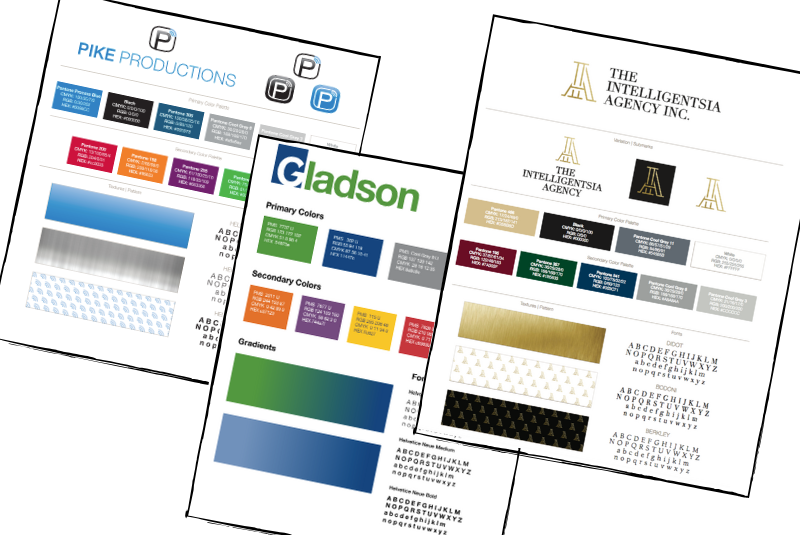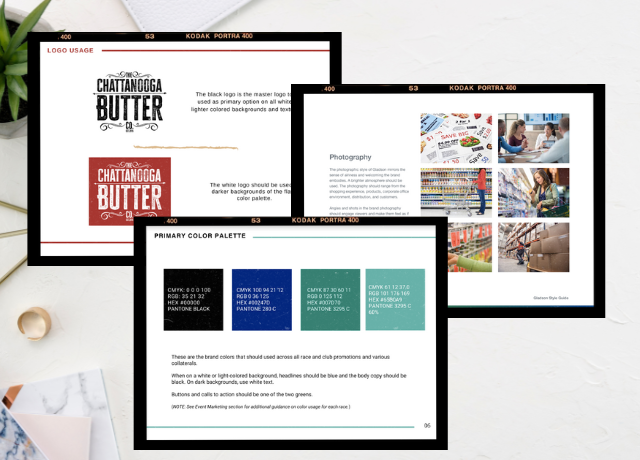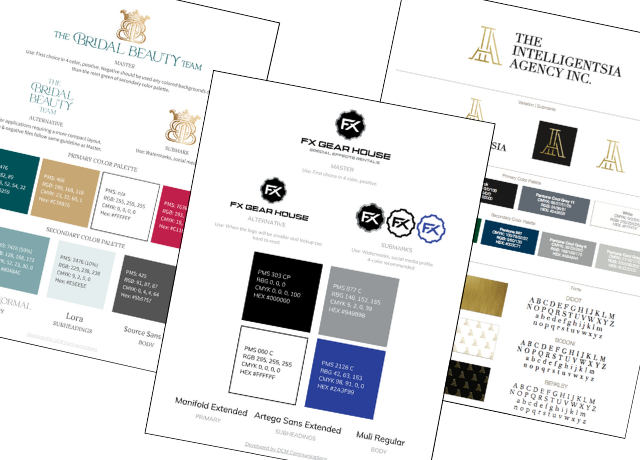Why Every Business Needs Brand Guidelines and How to Get Started
When first starting your business, there are a variety of foundational necessities to consider:
→ Contract template
→ Website
Note: It can be small and even just a basic landing page, but you really do need to be found online if you want to be seen as a legitimate business.
→ Company name
→ Offer/product
→ Set prices or rates
Sometimes, you might also want to throw a logo into the mix. If you’re starting your business with capital investment or already have some freelance income, creating your entire brand from the get-go is a solid idea.
Remember:
A “brand” is more than just a logo.
It includes your typography, color palette, tone of voice, and overall style that’ll weave itself into all of your marketing as well as how your employees show up at events.
Creating a new brand, especially if you hire an expert, is an investment.
Once you’ve established it though, you get the most out of the investment by ensuring all your future marketing and forward-facing materials (and people!) adhere to the brand you’ve created.
The Importance of Brand Guidelines
This is where brand guidelines come into play. You can have basic guidelines or really in-depth ones, depending on the size of your business and its stage. Let’s break down the two types and when you will use them.
Type 1: Basic Guidelines or a Brand Board
A Brand Board, as we call them at DCM, is a simple blueprint for how your brand should be represented in all graphic elements, including your website, advertisements, custom graphics for social media, deliverables you provide to clients, and product marketing material.
Every business that has a name should have a one-pager including the following:
→ Typography to use for both headings and body copy
→ Color palette of at least three colors with full color codes (RGB, CMYK, and HEX)
→ Examples of each version of your logo (master, alternative, and submark) and high-level explanations of when/how to use them
This instruction gives any graphic designer, whether you hire one or ten over the course of your business, the parameters to follow so no matter who creates the content, your brand looks consistent across all channels.

Benefits of Basic Brand Guidelines
Having even the simplest of brand guidelines like a Brand Board ensures consistency and professionalism across all your marketing materials. It provides clear instructions for designers and anyone else creating content for your business.
Type 2: A Complete Brand Guide
As soon as you are more established and bring in at least $50,000 a year OR you have more than one designer working on your materials, it’s worth upgrading to a complete brand guide.
The more you grow, the more important documentation is since you as the owner won’t always be the one training someone new. And even if you are, do you really want to say the same thing 10 times over?
Clearly not, so let’s document it and give yourself complete peace of mind that you are very clear about how you want things done.
This includes everything in the basic version with the following additional elements, as applicable to the business:
→ Examples of correct and incorrect usage of your logo, including the color backgrounds they can and cannot be placed on, as well as the proportions for how it should appear. This will also include some distortions to illustrate the incorrect way to use a logo.
→ When to use each color version of your logo (full color, solid primary color, white, and black)
→ Rules for photography: overall style and angle of photographs as well as whether or not any filters or overlays are permitted.
→ Option: Set of approved photos & how to use them
→ Approved social media styles: platform typefaces, color backgrounds, use of emojis (or not), etc.
→ Videography rules & style expectations and/or parameters
→ Email signature styles & creative allowances
Why You Need a Complete Brand Guide
The larger your company grows and the more people you have working for you, the more important it will be to have a complete brand guide to keep parameters clear.
As the business owner, you want to ensure that the brand you created, or invested in someone else creating, stays true across all areas of your company without you needing to check if the correct color red or blue has been selected.
The guidelines should be sent to all employees (yes, even sales people and IT team members need these) so that any original content they produce and could be sending out into the world is consistent with the brand you want presented.
This includes proposal templates, presentations (internal and external), marketing content, and anything else that is public-facing OR could become public facing.
The Bottom Line
Investing in brand guidelines, whether basic or comprehensive, ensures your brand remains consistent and professional across all platforms and materials.
This consistency helps build trust and recognition with your audience, ultimately contributing to your business’s success.







